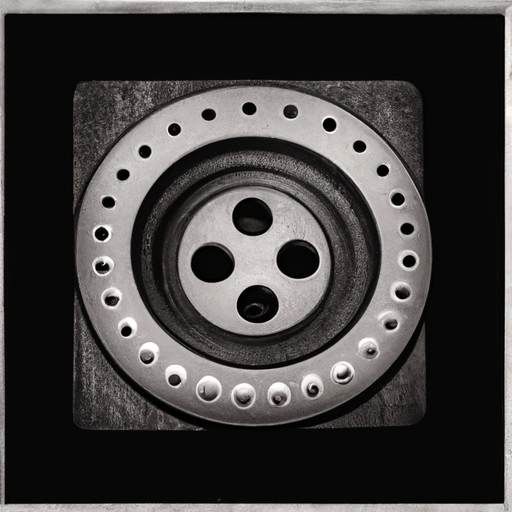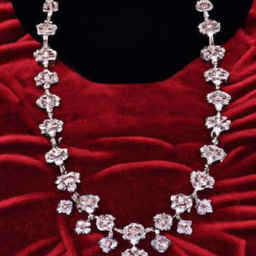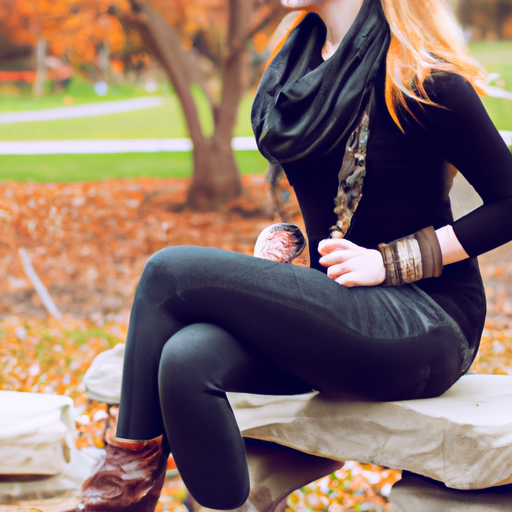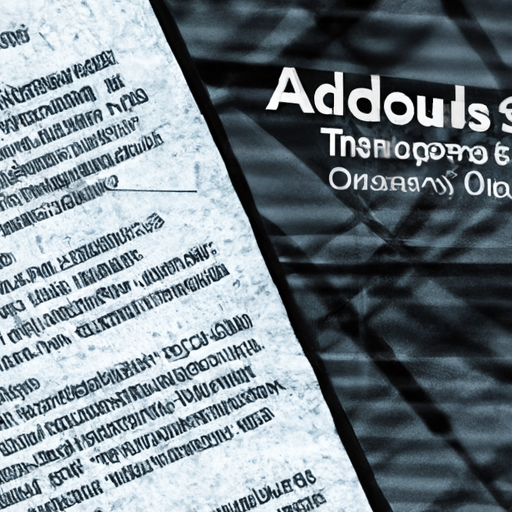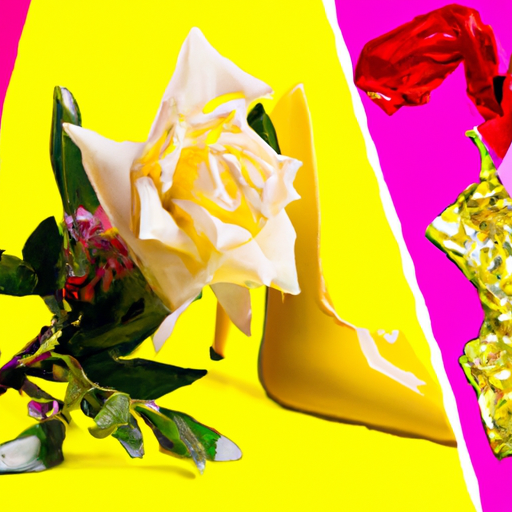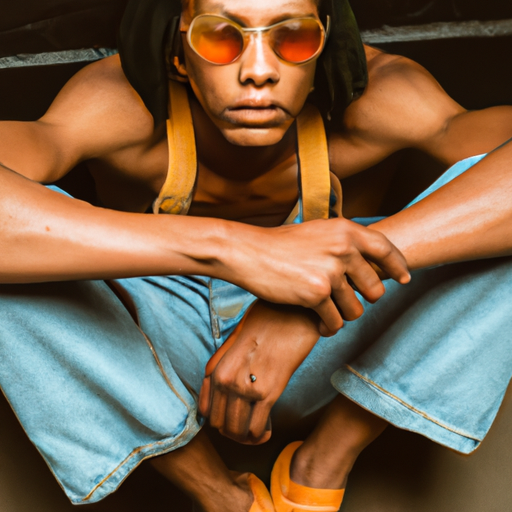Why Do Fashion Trends Repeat?
Have you ever wondered why certain fashion trends seem to resurface time and time again? This article explores the fascinating phenomenon of fashion’s cyclical nature, delving into the psychological, cultural, and societal factors that contribute to the revival of past trends. From the nostalgia-driven desire for retro styles to the cyclical nature of human preferences, you’ll gain insight into why fashion trends always find their way back into our closets. So, grab a cup of coffee, sit back, and prepare to uncover the captivating world of fashion’s repetitive rhythms.
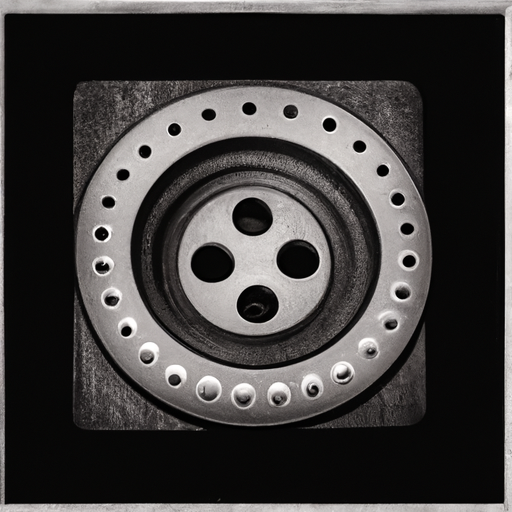
Table of Contents
Cultural Influence on Fashion Trends
Cultural Cycles and Revivals
Fashion trends often go through cycles and revivals as a result of cultural influences. The fashion industry draws inspiration from diverse cultures around the world, incorporating elements of traditional clothing, patterns, and styles. These cultural cycles and revivals allow for the celebration and appreciation of different heritages and help to keep fashion trends dynamic and ever-evolving. From the resurgence of 70s disco fashion to the reimagining of traditional tribal garments, cultural influence plays a significant role in shaping fashion trends.
Nostalgia and Sentimental Value
Another reason why fashion trends repeat is the powerful influence of nostalgia and sentimental value. As fashion is deeply intertwined with personal experiences and memories, certain styles and trends evoke a sense of nostalgia and sentimental value. This nostalgia-driven desire often leads to the revival of past fashion trends, as individuals seek to recreate or relive moments from their past. Whether it’s the comeback of vibrant 90s sportswear or the resurgence of 80s power shoulders, fashion designers tap into this nostalgic sentiment to connect with consumers on an emotional level.
Popularity of Retro Fashion
Retro fashion, characterized by styles from previous decades, continues to be a persistent trend in the fashion industry. The popularity of retro fashion can be attributed to its ability to offer a unique and distinctive aesthetic that stands out in a sea of current trends. These timeless pieces provide individuals with a sense of individuality and self-expression, allowing them to break away from mainstream fashion and embrace vintage-inspired looks. The fascination with retro fashion also stems from its association with iconic symbols and cultural movements of the past, contributing to its enduring appeal.
Economic Factors in Fashion Trend Repetition
Cost-effective Production Techniques
The economic factors that contribute to fashion trend repetition are primarily centered around cost-effective production techniques. By reusing existing fashion designs, manufacturers can minimize production costs and maximize profits. This approach allows fashion brands to respond quickly to consumer demands and market trends without the need for extensive and costly research and development. As a result, popular fashion trends are often reproduced and adapted to appeal to a wide audience, ensuring affordability and accessibility.
Consumer Demand for Affordable Collections
The fashion industry is highly responsive to consumer demand for affordable collections. With the rise of fast fashion brands and mass production, consumers are accustomed to a constant influx of new trends at affordable prices. As a result, fashion brands must continually introduce fresh iterations of popular trends to cater to this demand. By repeating fashion trends that have been well-received in the past, brands can offer consumers affordable and easily accessible fashion options, ensuring their continued loyalty and support.
Escapism and Economic Recession
During periods of economic recession, fashion trends often experience repetition as a form of escapism. In times of financial uncertainty, individuals may seek solace in familiar trends that provide a sense of comfort and security. Consequently, fashion designers may choose to revive past trends that were well-received during economically challenging times, as they tap into the nostalgic sentiment and offer a sense of comfort to consumers. These repeated fashion trends act as a form of escapism, allowing individuals to temporarily detach themselves from the harsh realities of the economic landscape.
Psychological Factors That Drive Fashion Trends
Desire for Individuality and Self-Expression
Fashion trends are greatly influenced by the human desire for individuality and self-expression. As individuals, we strive to stand out and make a statement through our outward appearance. Fashion trends play a crucial role in fulfilling this desire, offering us a platform to showcase our unique personalities and beliefs. Whether through bold colors, unconventional silhouettes, or innovative styling, fashion trends give individuals the opportunity to express themselves and differentiate from the crowd.
Social Conformity and the Power of Influence
Simultaneously, fashion trends also emerge as a result of social conformity and the power of influence. It is not uncommon for individuals to seek validation and acceptance from their peers, and fashion trends provide a means to achieve this. The desire to fit in and be seen as fashionable compels individuals to follow current trends and adopt popular styles. This collective desire to conform to societal norms and expectations drives the repetition of fashion trends as it necessitates the creation of styles that cater to a wide audience.
Emotional Attachment and Personal Identity
Fashion trends hold immense emotional value for individuals as they contribute to the formation of personal identity. As we explore different trends and styles, we develop emotional attachments to certain fashion pieces that resonate with our unique sense of self. These emotional attachments can be strong enough to compel individuals to revisit and embrace fashion trends that have made a lasting impact on them. Whether it’s a particular color, pattern, or garment, fashion trends that evoke emotional responses become a part of an individual’s personal identity, leading to their repetition and resurgence in the fashion industry.
Reinterpretation and Innovation in Fashion Trends
Creative Adaptation of Past Trends
Fashion trends often repeat through the creative adaptation of past trends. Designers take inspiration from previous fashion eras and infuse them with innovative elements to create fresh and exciting styles. By reinterpreting and reinventing past trends, designers can breathe new life into familiar aesthetics, ensuring their continued relevance in the ever-changing fashion landscape. This creative adaptation allows fashion trends to evolve, while still respecting the heritage and history from which they originated.
Injecting New Elements into Classic Styles
To keep fashion trends engaging and appealing, designers frequently inject new elements into classic styles. By blending traditional design elements with contemporary influences, fashion trends are revitalized and transformed, capturing the attention of consumers. This fusion of old and new creates a dynamic synergy that keeps fashion trends from becoming stagnant and predictable. Whether it’s the incorporation of unconventional materials, modern silhouettes, or innovative embellishments, the infusion of new elements ensures the continuous evolution of fashion trends.
Crossover of Different Fashion Eras
Fashion trends often repeat through the crossover of different fashion eras. Designers draw inspiration from various time periods, taking elements from each to create eclectic and unique styles. This crossover allows for the creation of fashion trends that appeal to a wide range of audiences, as they offer a blend of familiar and new elements. The combination of different fashion eras adds depth and complexity to trends, resulting in dynamic and visually captivating designs that transcend traditional fashion boundaries.
Fashion Cycle and Evolution
Revolutionary Cycles Influence Trends
The fashion cycle is a continuous process of trends emerging, thriving, declining, and eventually resurfacing in a new iteration. Revolutionary cycles play a key role in influencing fashion trends, as they introduce groundbreaking styles that challenge prevailing norms. These revolutionary moments can be sparked by cultural, societal, or technological shifts, leading to the birth of new trends that reshape the fashion industry. As these trends gain popularity and peak, they eventually decline, only to be revived again in future cycles.
Cyclic Nature of Fashion Industry
The fashion industry’s cyclic nature is instrumental in the repetition of fashion trends. The cyclical process allows for trends to be reintroduced and reimaged in new ways, ensuring continuous innovation and evolution. This cyclical nature of the fashion industry also serves as a reflection of society and its changing values. As society evolves, fashion trends adapt and respond, resulting in the repetition and reinvention of styles that resonate with the current cultural and social climate.
Revolutionizing Fashion Through Technology
Advancements in technology have revolutionized the fashion industry, influencing the repetition and evolution of fashion trends. From the development of new fabrics and materials to the utilization of digital design tools, technology has paved the way for innovative fashion creations. The integration of technology allows for the exploration of new aesthetics, techniques, and possibilities, reshaping the way fashion trends are conceived and executed. By embracing technology, fashion designers can push the boundaries of creativity and tap into new sources of inspiration, leading to the repetition and reinvention of fashion trends.
Influence of Fashion Icons and Celebrities
Icons Setting the Trend
Fashion icons and celebrities have a significant influence on the repetition of fashion trends. Their style choices and sartorial expressions often dictate what is revered and desired within the fashion industry. Icons such as Audrey Hepburn, Marilyn Monroe, and Princess Diana have left an indelible mark on fashion, with their signature looks regularly replicated and celebrated by designers and consumers alike. By setting the trend, these fashion icons contribute to the repetition of certain styles and aesthetics, which continue to captivate and inspire new generations.
Celebrity Endorsements and Collaborations
Celebrity endorsements and collaborations also play a pivotal role in fashion trend repetition. When celebrities lend their name, image, or creative input to fashion brands, it creates a powerful association between the celebrity and the brand’s products. This association often leads to the repetition of specific fashion trends, as consumers strive to emulate the style of their favorite icons. Celebrity collaborations, such as high-profile partnerships between designers and musicians, also contribute to the repetition of fashion trends, as these limited-edition collections often spark immense interest and demand.
Red Carpet Influence on Mainstream Fashion
The red carpet has become a significant source of inspiration for mainstream fashion trends. The fashion choices made by celebrities at high-profile events are closely watched and analyzed by the fashion industry and consumers alike. Red carpet looks that receive widespread acclaim and media attention often have a profound impact on fashion trends, prompting designers to replicate or reinterpret these styles for the broader market. The influence of red carpet fashion on mainstream trends highlights the power of celebrities in shaping the repetition and evolution of fashion aesthetics.
Social Media and the Speed of Trend Repetition
Quick Dissemination of Information
The rise of social media has accelerated the speed at which fashion trends are disseminated and replicated. Through platforms like Instagram, Twitter, and TikTok, fashion influencers and enthusiasts can instantly share their favorite styles and trends with a global audience. This quick dissemination of information results in trends spreading rapidly and gaining popularity at unprecedented rates. As a result, the repetition of fashion trends happens at a faster pace, as consumers have access to a diverse range of fashion inspiration and can easily adopt and adapt new trends into their own wardrobes.
New Influencers and Digital Trends
Social media has also given rise to a new generation of influencers and digital trends that shape fashion trends. These influencers often have a massive following and can swiftly influence the adoption of new styles among their audience. By showcasing their unique fashion choices and embodying specific aesthetics, these influencers contribute to the repetition of fashion trends. Whether through carefully curated outfits or collaborations with fashion brands, these digital influencers play a pivotal role in driving trends and shaping consumer preferences.
Increasing Consumer Expectations
The speed at which fashion trends are repeated and replicated through social media has also led to increasing consumer expectations. With constant exposure to new styles and trends, consumers have developed a desire for continuous innovation and novelty. Fashion brands must constantly deliver fresh and exciting designs to meet these expectations and maintain consumer interest. The pressure to outdo previous trends and offer something new has resulted in the rapid repetition and reinvention of fashion aesthetics to satisfy consumer demands.
Seasonal and Recurring Fashion Themes
Nature-inspired Trends
Nature has long been a source of inspiration for fashion trends, with seasonal changes and natural elements often influencing design aesthetics. From floral patterns in spring and summer to earthy tones and cozy materials in fall and winter, nature-inspired trends bring a sense of harmony and connection with the world around us. These recurring themes allow fashion designers to tap into the timeless beauty of nature and create trends that resonate with individuals’ desires for authenticity and sustainability.
Holiday and Festive Fashion
Holiday and festive fashion is another recurring theme that shapes fashion trends. From Halloween costumes to glamorous New Year’s Eve outfits, fashion trends are often influenced by the spirit and celebration of special occasions. Each season, fashion brands release new collections that cater specifically to the festive period, featuring unique designs, colors, and embellishments. These holiday and festive fashion trends provide individuals with an opportunity to showcase their sense of style while embracing the joy and spirit of these special moments.
Fashion Trend Predictability
Fashion trends often follow predictable patterns and cycles, allowing industry professionals to anticipate and plan for future trends. By closely monitoring historical data, consumer preferences, and socio-cultural shifts, fashion analysts can make informed predictions about upcoming trends. This predictability ensures that certain fashion themes and styles are repeated, enabling fashion brands to strategically align their design and marketing efforts. The ability to predict and repeat fashion trends adds stability and reliability to the ever-changing landscape of the fashion industry.
Fashion as a Reflection of Time Periods
Historical Recurrence in Fashion
Fashion has a cyclical nature that often sees the recurrence of trends from different historical periods. Designers draw inspiration from the past, embracing elements from various time periods and reinterpreting them for modern audiences. This historical recurrence reflects society’s fascination with the past and its desire to revisit and reinterpret previous eras. From the bohemian styles of the 1970s to the sleek minimalism of the 1990s, fashion continually reinvents itself while paying homage to the past.
Sociocultural Shifts and Fashion
Fashion trends are not isolated from the broader sociocultural shifts occurring in society. As societal values and norms change, so do fashion trends. The fashion industry acts as a mirror of society, reflecting the social, political, and cultural changes of the time. For example, the rise of athleisure trend can be attributed to the growing health-consciousness and emphasis on casual comfort in modern society. By intertwining with sociocultural shifts, fashion trends repeat to capture and represent the spirit and essence of different time periods.
Relevance of Past Eras in Present Fashion
Past eras continue to have relevance and influence in present fashion trends. The nostalgia-driven revival of certain styles and aesthetics demonstrates the enduring impact of past eras on contemporary fashion. Whether it’s the resurgence of 90s grunge or the reimagining of 20s flapper fashion, the past continues to inspire and inform the present. By revisiting and repeating fashion trends from past decades, designers pay homage to the rich history of fashion while adding their unique touch to create styles that resonate with current audiences.
The Role of Fashion Industry and Marketing
Fashion Industry’s Commercial Motives
The fashion industry’s commercial motives play a significant role in the repetition of fashion trends. As a multi-billion-dollar industry, fashion relies on the continuous consumption and turnover of products. To maximize profitability, fashion brands often repeat successful trends, ensuring their offerings remain in demand among consumers. By catering to consumer preferences and capitalizing on popular styles, the fashion industry perpetuates the repetition and evolution of fashion trends to sustain its economic viability.
Brand Repositioning and Revivals
Fashion brands often engage in brand repositioning and revivals as a means to stay relevant and appeal to new audiences. By revisiting their own archives and iconic styles, brands can tap into consumer nostalgia and sentimental value, reinvigorating their brand image and product offerings. These revivals allow fashion brands to reintroduce older trends with a fresh twist, attracting both existing and new customers. Brand repositioning and revivals contribute to the repetition of fashion trends, enabling brands to maintain their market presence and appeal.
Marketing Strategies to Maintain Interest
The repetition of fashion trends is supported by strategic marketing efforts aimed at maintaining consumer interest. Fashion brands invest heavily in marketing campaigns, runway shows, and collaborations to showcase their latest collections and generate excitement among consumers. These marketing strategies create a buzz and anticipation around new trends, driving consumer demand and ensuring the successful repetition of fashion aesthetics. By leveraging effective marketing techniques, fashion brands can capture attention, generate desire, and establish loyalty, cementing their position within the ever-competitive fashion industry.
In conclusion, fashion trends repeat due to a myriad of factors, including cultural influences, economic considerations, psychological drivers, reinterpretation and innovation, the cyclical nature of the fashion industry, the influence of fashion icons and celebrities, the impact of social media, recurring fashion themes, reflection of time periods, and the role of the fashion industry and marketing. These factors interact and intertwine, shaping the evolution and repetition of fashion trends. From the cyclical nature of trends to the need for cost-effective production techniques, fashion trends continue to captivate and inspire individuals, embracing nostalgia, expressing personal identity, and reflecting the ever-changing world we live in.
